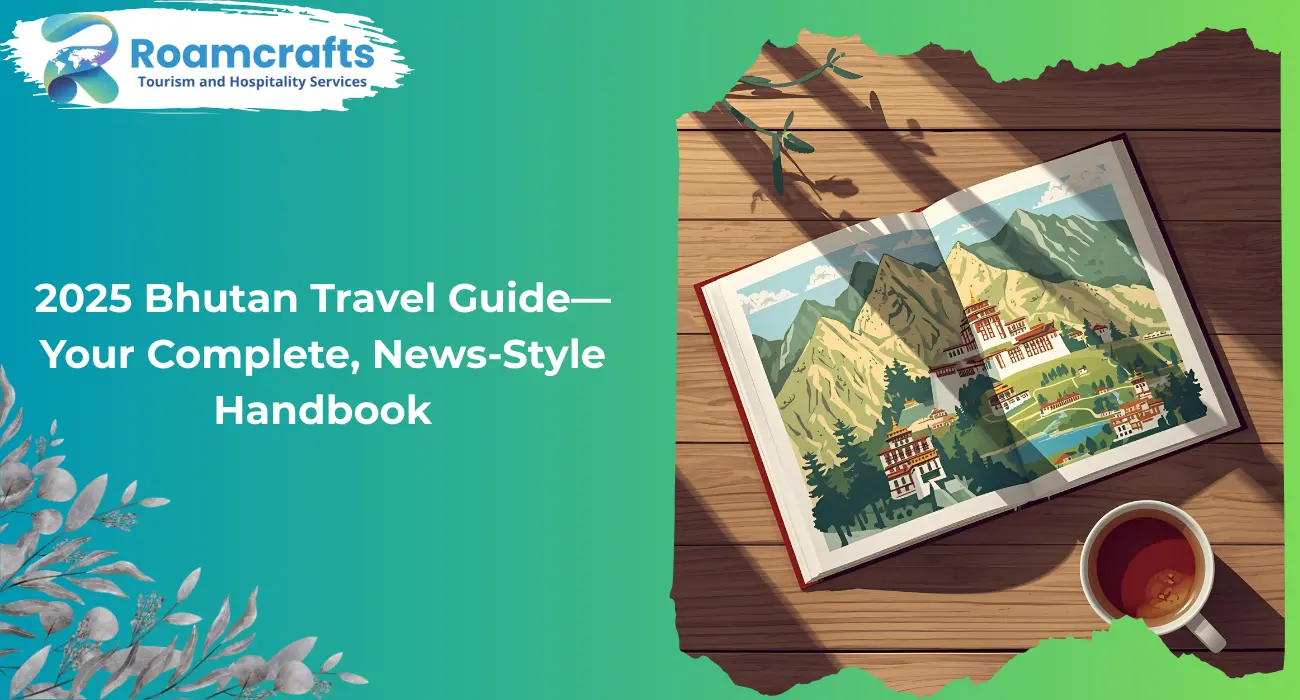
From visas to insider tips, tailored for both Indian and foreign readers
Thimphu/Jaigaon, September 2, 2025 – As the Land of the Thunder Dragon continues to enchant travelers with its rich culture and sustainability-first tourism, here’s your updated guide for a seamless Bhutan experience this year. Whether you're an Indian guest planning a Himalayan escape or a foreign traveler seeking something more soulful, this guide is your compass.
No visa required. Indians may enter Bhutan using a valid passport (6 months validity) or a Voter ID card (with photo).
Entry Permit must be obtained at key entry points such as Phuentsholing, Gelephu, or Paro Airport.
SDF (Sustainable Development Fee): ₹1,200 per person, per night.
Visa mandatory. All foreign visitors must apply online for an e-Visa.
Application portal: Apply via the Tourism Department’s official portal at visit.doi.gov.bt.
Fee structure:
Visa fee: USD 40 (non-refundable one-off)
Sustainable Development Fee (SDF): USD 100 per day — valid through August 2027
Create an account.
Upload passport scan, photo, travel dates.
Sign the "Pledge of Friendship."
Pay application fee and SDF.
Expect approval within five working days.
Note: Visas must be pre-arranged by licensed tour operators, hotels, or guides, as solo filings are generally not accepted.
| Season | Highlights |
|---|---|
| Spring (Mar–May) | Rhododendron blooms, perfect for trekking & photography. |
| Autumn (Sep–Nov) | Crisp skies, festivals like Thimphu Tshechu in full swing. |
| Winter (Dec–Feb) | Cold, clear views, fewer crowds. Ideal for cozy cultural retreats. |
| Summer/Monsoon (Jun–Aug) | Lush landscapes, lower tourism—great for quieter, off-the-beaten-path travel. |
Remove your shoes and dress modestly when entering temples or dzongs.
Ask permission before photographing monks or locals.
Bhutanese value humility and gratitude—smiles are your best conversational tool.
Bhutan is carbon-negative. Preserve its pristine environment—avoid littering and respect local conservation practices.
Currency: Bhutanese Ngultrum (Nu),pegged to INR; Indian rupees widely accepted. Currency exchange also available for USD and EUR.
Connectivity: Purchase a local SIM (TashiCell or B-Mobile) for reliable coverage; Wi-Fi is common at hotels.
Transport: No railways—travel by scenic roads or domestic flights. Carry motion sickness tablets if needed.
Festivals: Major events like Paro Tshechu (April) or Thimphu Tshechu (October) require advance bookings.
Clothing: Layer smart—raincoats for monsoon, light jackets in summer, and warm woolens in winter.
By Air: Direct flights from Delhi, Kolkata, Guwahati, and Bangkok land at Paro International Airport.
By Road (for Indians): Popular overland entries include Jaigaon–Phuentsholing, Gelephu, and Samdrup Jongkhar.
With the SDF lowered to USD 100 and easier entry for Indians, Bhutan's allure is stronger than ever. Sustaining its “high value, low volume” tourism model, the kingdom blends untouched landscapes with cultural richness and responsible travel—making it not just a destination, but a transformative experience